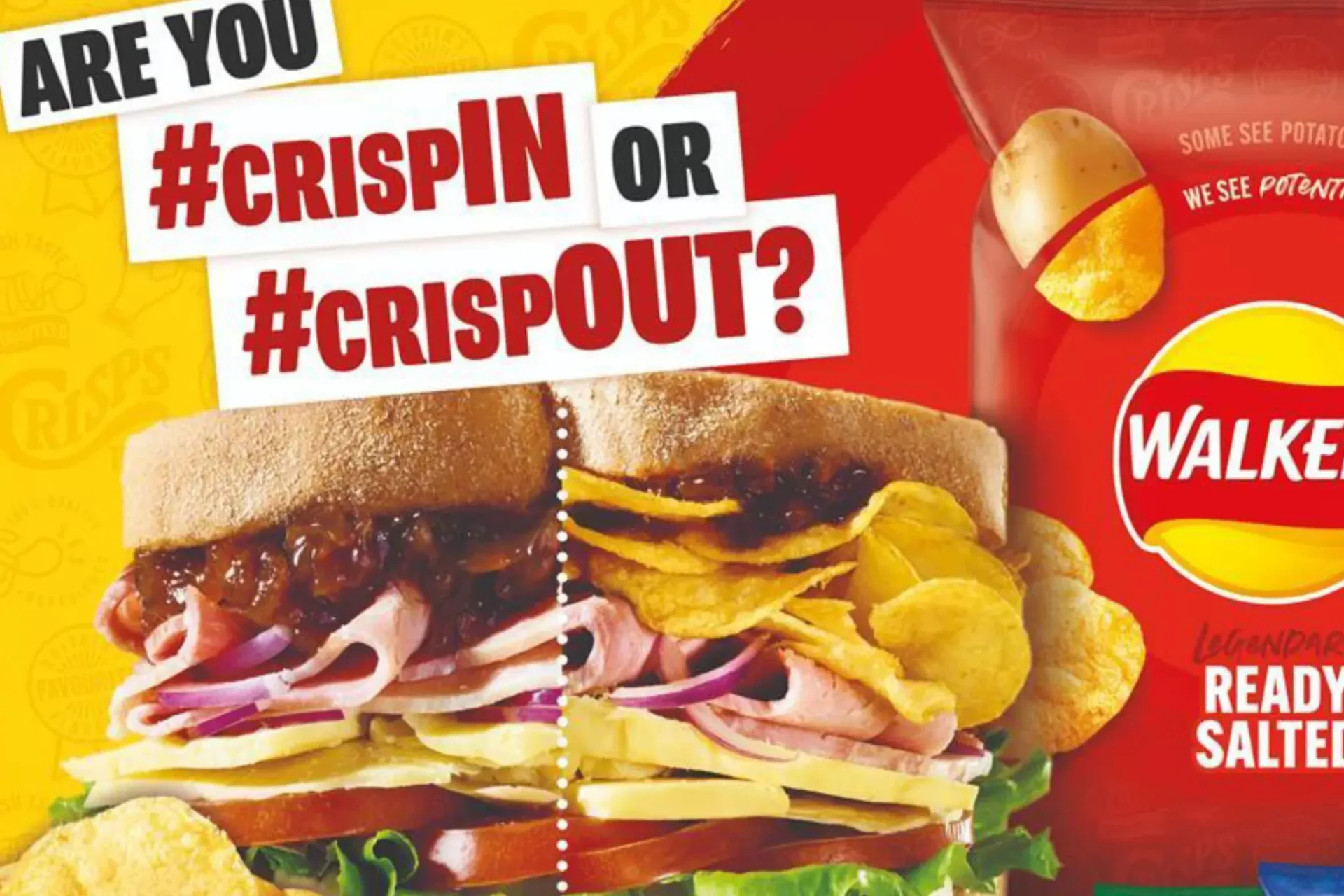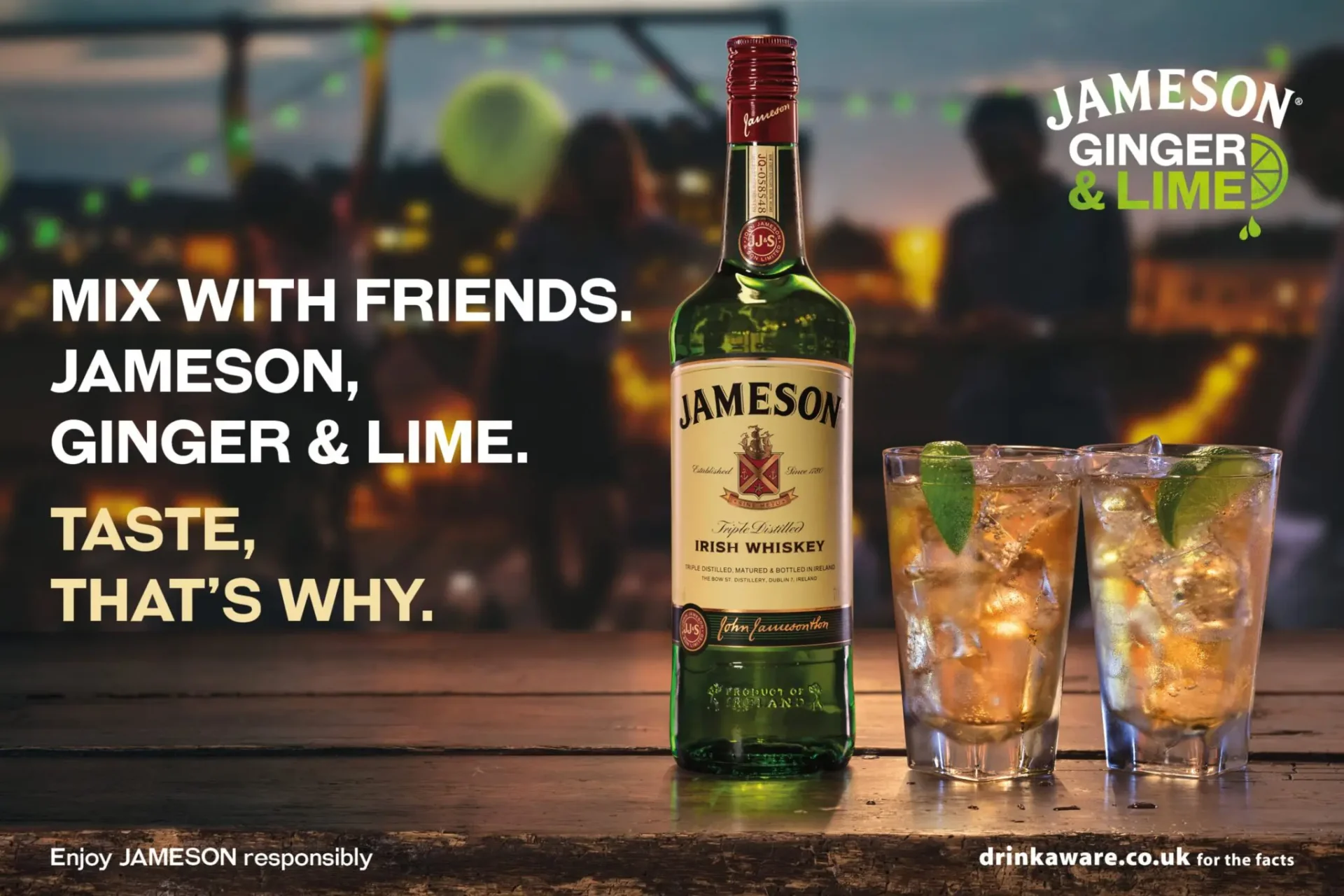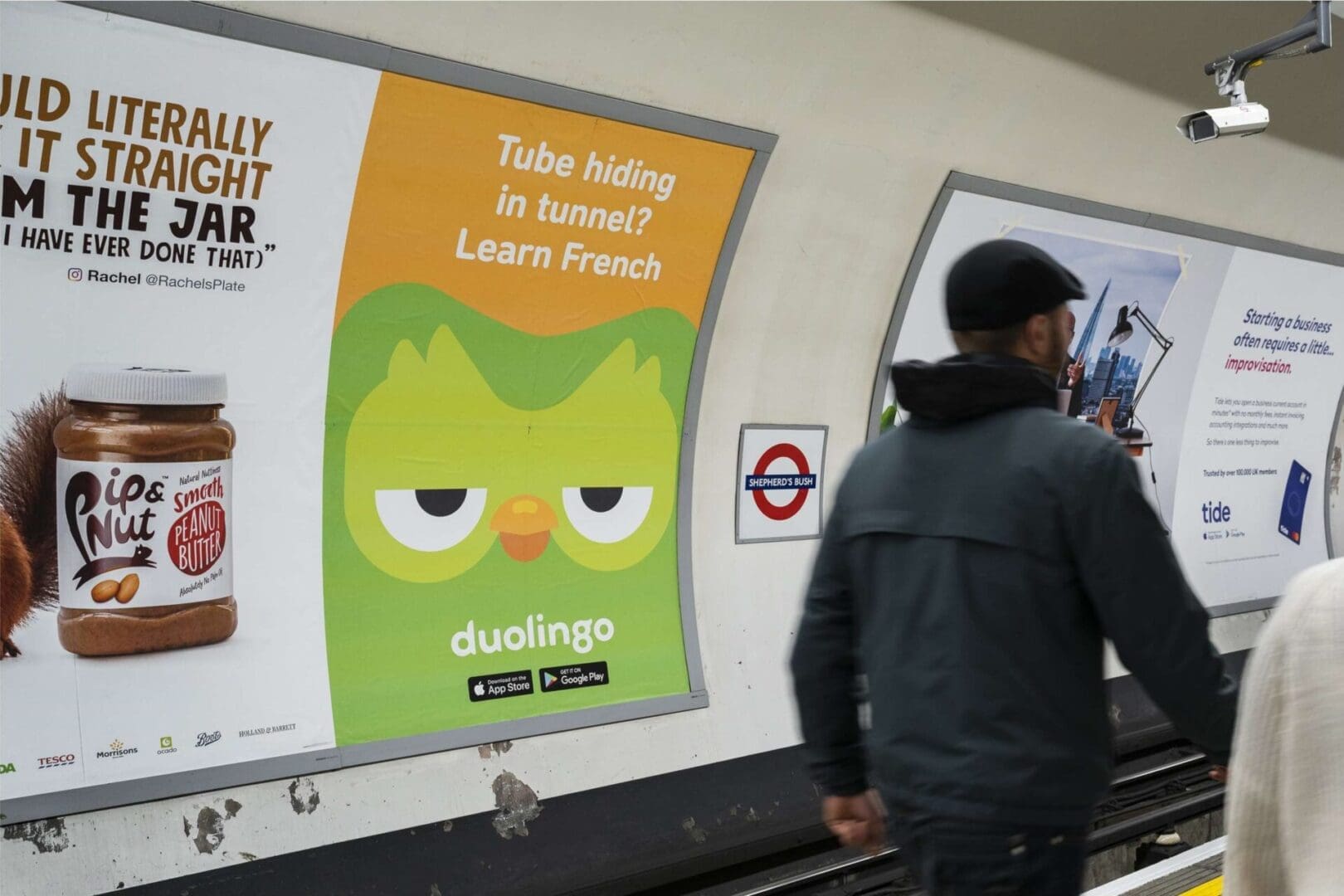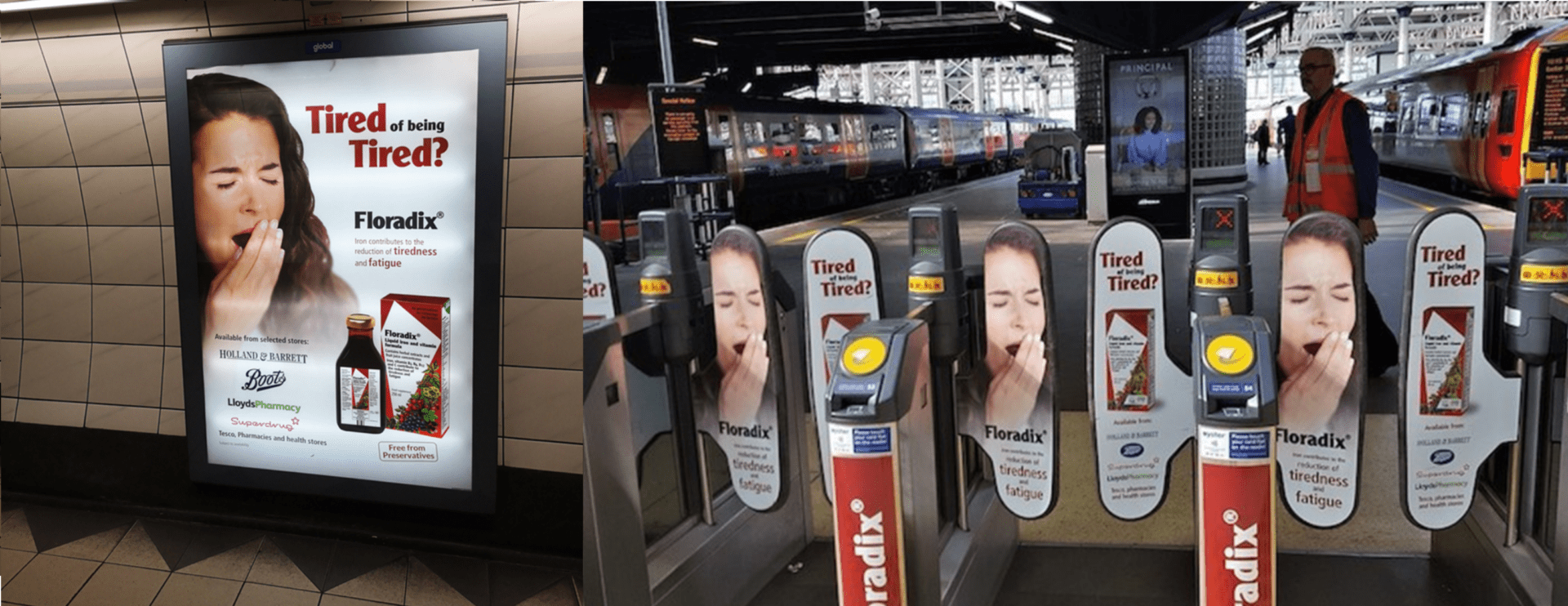Floradix liquid iron is a popular dietary aid used for treating iron deficiency and anaemia, with 1 in 4 people suffering from such deficiencies globally, however much less are aware of it. Playing only within this space, Floradix would be restricting its relevant target audience and “occasions”.
Iron, plays a key role in oxygenating the blood and a deficiency can cause people to feel tired and fatigued. This angle offers Floradix a much broader audience of people capable of self-diagnosing their need for a solution. The ‘health supplements’ category is, however, a crowded market to own, maintain and grow brand salience so how to do this efficiently? …enter Category Entry Points.
By recognising that the commute to work (before a busy day) and coming home from work (wishing they had more energy after a hard day) were key category entry points for a solution to tiredness, Floradix embarked on an OOH campaign covering the London underground and overground rail networks.
This campaign drives traditional ‘top of mind awareness’ for the brand but, moreover, it does so at a point when the consumer is in the mental space to engage with the category. According to the design agency behind the ad (Prism), this positioning, messaging and execution against a key CEP has helped sales of Floradix increase by 20%+ since the campaign’s launch over 10 years ago.
















